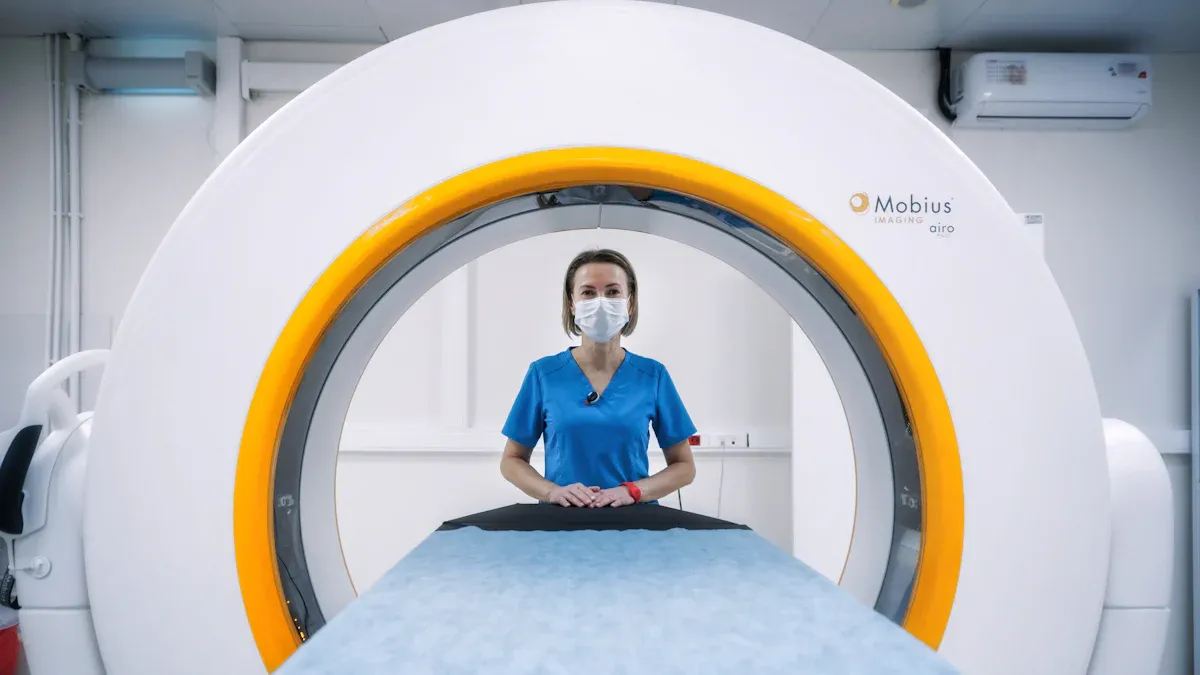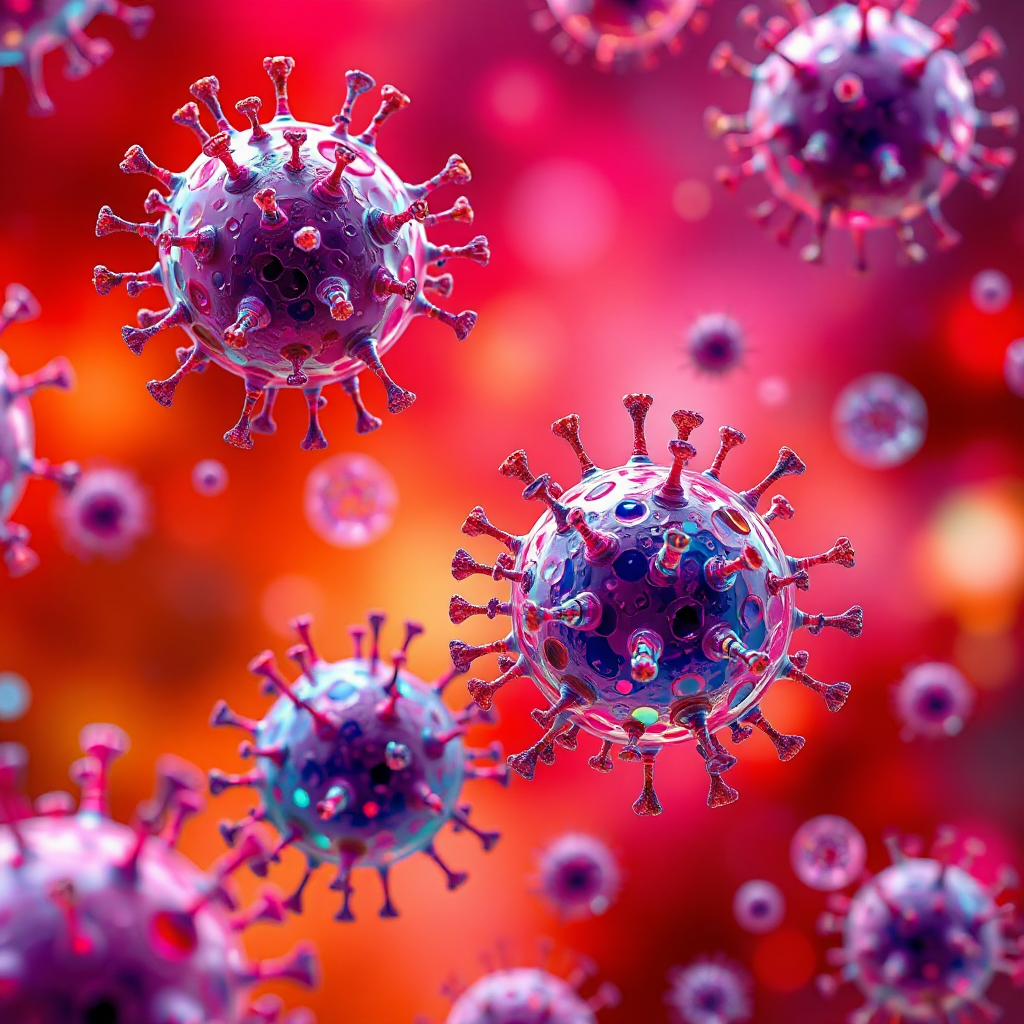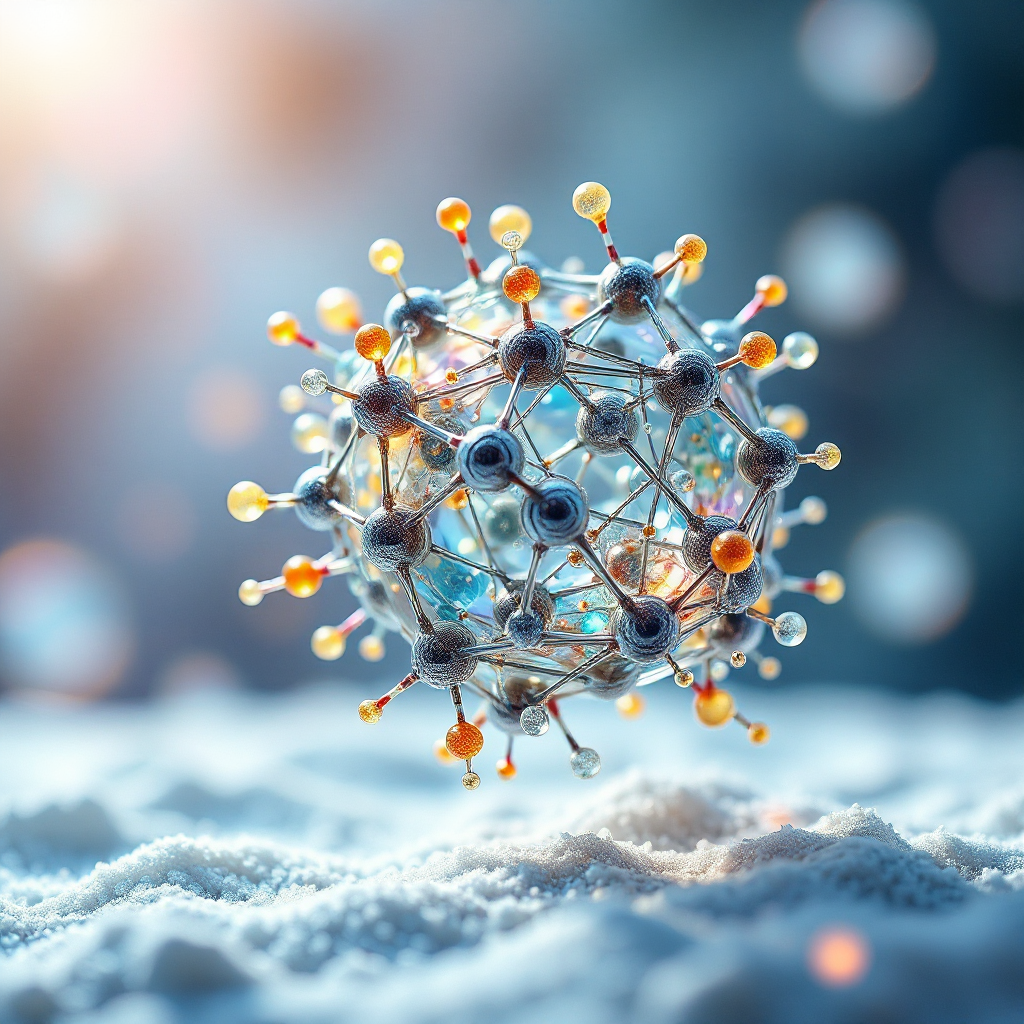Nanotechnology Changes Cancer Detection Forever

Nanotechnology: The Future Standard in Cancer Detection is reshaping how you understand and approach cancer care. By operating at the molecular level, it allows doctors to identify cancer cells earlier than ever before. This breakthrough technology significantly improves survival rates. For example:
Over 80% of lung cancer patients live for at least one year when diagnosed early, compared to just 15% at advanced stages.
Survival rates for early-stage breast cancer exceed 90%, while advanced cases drop to only 15%.
The rising prevalence of cancer underscores the need for advanced solutions. With projections of over 35 million new cases by 2050, nanotechnology: The Future Standard in Cancer Detection is becoming increasingly vital.
Key Takeaways
Nanotechnology helps find cancer early, improving chances of survival. Early detection means better treatment results.
Special drug delivery systems target cancer cells only. This reduces harm to healthy cells and makes patients feel better.
Doctors can watch cancer progress in real-time. This helps them change treatments quickly and avoid painful procedures.
Tiny nanorobots are a big step in cancer care. They deliver medicine straight to tumors, protecting healthy cells nearby.
Even with its benefits, nanotechnology has problems like high costs and strict rules. These issues make it hard for many people to get these new treatments.
Nanotechnology: The Future Standard in Cancer Detection

Early Detection with Nanotechnology
Nanotechnology is changing how you think about early cancer detection. By working at the molecular level, it identifies cancer cells before they grow into larger, more dangerous tumors. This early detection can save lives by catching cancer when it is most treatable. For example, researchers like Machado et al. (2005) demonstrated that a portable chemical vapor detector using nanotechnology achieved a sensitivity of 71.4% and a specificity of 91.9% in distinguishing lung cancer patients from healthy individuals. These numbers highlight how nanotechnology is setting a new standard in cancer diagnostics.
Nanotechnology also improves imaging techniques. Gold nanoparticles, for instance, enhance CT scans by providing high-contrast images. This makes it easier for doctors to spot even the smallest signs of cancer. Additionally, fluorescent immunoassays (FIA) enhanced by nanotechnology can detect very low levels of cancer biomarkers. This capability is crucial for diagnosing cancer in its earliest stages, giving you a better chance at successful treatment.
Precision Diagnostics for Better Outcomes
Accurate diagnosis is essential for effective cancer treatment. Nanotechnology enhances precision by making cancer cells more visible and easier to analyze. For instance, metal-enhanced fluorescence from nanostructures can amplify detection sensitivity up to 7,400-fold for proteins like Immunoglobulin G. This level of sensitivity ensures that even the smallest traces of cancer are detected, reducing the chances of misdiagnosis.
Nanotechnology also improves the reliability of diagnostic tools. Huang et al. emphasized the importance of stable temperature and humidity for accurate classification using advanced techniques like Linear Discrimination Analysis and Support Vector Machine. These advancements ensure that diagnostic results are consistent and trustworthy, giving you confidence in your treatment plan.
Real-Time Monitoring of Cancer Progression
Tracking cancer progression in real-time is another area where nanotechnology excels. It allows doctors to monitor how cancer responds to treatment without invasive procedures. For example, nanosensors can detect changes in cancer biomarkers in your blood, providing immediate feedback on whether a treatment is working.
This real-time monitoring helps doctors adjust treatment plans quickly, ensuring the best possible outcomes. It also reduces the need for repeated biopsies, making the process less stressful for you. With nanotechnology, you gain a clearer picture of your health and a more personalized approach to cancer care.
Advancements in Cancer Treatment Through Nanotechnology

Targeted Drug Delivery Systems
Nanotechnology has revolutionized how cancer drugs reach their target. Traditional chemotherapy often harms healthy cells, leading to severe side effects. With nanotechnology, you benefit from targeted drug delivery systems that focus solely on cancer cells. Engineered smart nanoparticles act like guided missiles, delivering medication directly to tumors while sparing healthy tissues. This precision reduces side effects and improves treatment outcomes.
Researchers have developed various types of nanoparticles to enhance drug delivery. For example:
Liposomal nanocarriers increase drug accumulation in tumors by 2.5 times and reduce systemic toxicity by 40%.
Polymeric nanoparticles improve tumor suppression rates by 60%.
Gold nanoparticles achieve an impressive 85% tumor ablation in clinical trials.
Antibody-functionalized carriers enhance targeting specificity by a factor of three.
Evidence Type | Improvement Metrics |
|---|---|
Liposomal Nanocarriers | 2.5-fold increase in tumor drug accumulation, 40% reduction in systemic toxicity |
Polymeric Nanoparticles | 60% improvement in tumor suppression |
Gold Nanoparticles | 85% tumor ablation in clinical trials |
Antibody-functionalized Carriers | Increased specificity by a factor of three |
Statistical Analysis | p-values < 0.05 compared to conventional therapies |
Active Targeting Strategies | Improved tumor-to-normal tissue ratios |
Passive Targeting (EPR effect) | 20-30% increase in tumor drug accumulation |
These advancements demonstrate how nanotechnology enhances the precision, safety, and effectiveness of cancer treatments.
Nanorobots in Cancer Therapy
Imagine tiny robots working inside your body to fight cancer. Nanorobots are making this a reality. These microscopic machines navigate through your bloodstream, targeting and destroying cancer cells with incredible accuracy. They can even penetrate deep into tumors, delivering drugs more effectively than standard methods.
Recent studies highlight the potential of nanorobots in cancer therapy:
Researchers at Karolinska Institutet developed nanorobots equipped with "hidden weapons." These robots activate their weapons in the acidic environment of tumors, reducing tumor growth by 70% in mice.
DNA nanobots successfully cut off blood supply to tumors, causing significant shrinkage.
Enzyme-powered nanobots deliver drugs deep into tumor tissues, outperforming traditional nanoparticles.
Study Description | Key Findings |
|---|---|
Nanorobots with hidden weapons | |
DNA nanobots | Cut off blood supply, causing tumor shrinkage |
Enzyme-powered nanobots | Delivered drugs more effectively than standard nanoparticles |
These innovations show how nanorobots could redefine cancer therapy, offering you a more precise and less invasive treatment option.
Minimizing Side Effects with Nanotechnology
Cancer treatments often come with debilitating side effects. Nanotechnology minimizes these by targeting only cancer cells, leaving healthy cells unharmed. This approach reduces the risk of nausea, fatigue, and other common side effects associated with traditional therapies.
Cell-based drug delivery systems are another breakthrough. These systems use your body's immune cells to deliver drugs directly to tumors. By leveraging immune recognition, they selectively destroy cancer cells while sparing normal tissues. This method not only improves treatment effectiveness but also enhances your overall quality of life during therapy.
Nanotechnology: The Future Standard in Cancer Detection is not just about finding cancer early. It’s also about treating it more effectively and safely. With advancements like targeted drug delivery, nanorobots, and cell-based systems, you gain access to treatments that are both powerful and gentle on your body.
Benefits and Challenges of Nanotechnology in Oncology
Benefits: Enhanced Accuracy and Efficiency
Nanotechnology offers you unmatched precision in cancer care. It enhances diagnostic tools, making it easier to detect cancer at its earliest stages. For example, nanovaccines, such as polymer and liposome nanoparticles, provide strong specificity. These tools can target cancer cells with incredible accuracy, reducing the risk of false positives or negatives. This precision ensures you receive the right diagnosis and treatment plan.
Nanotechnology also improves treatment efficiency. Targeted drug delivery systems and nanorobots ensure that medications reach cancer cells directly. This approach minimizes damage to healthy tissues, leading to faster recovery times. Additionally, the potential for personalization in cancer treatment means you could receive therapies tailored to your unique needs.
Challenges: Cost and Accessibility
Despite its benefits, nanotechnology faces significant challenges. The high cost of research and development makes these advanced treatments expensive. Many healthcare systems struggle to afford the infrastructure needed to implement nanotechnology. As a result, access to these innovations remains limited for many patients.
Regulatory complexities also slow down the adoption of nanotechnology. Approving new treatments involves rigorous testing to ensure safety and effectiveness. This process can take years, delaying the availability of life-saving technologies. Furthermore, issues like immune escape mechanisms and immunogenicity complicate the development of nanovaccines.
Ethical Considerations in Nanomedicine
Nanotechnology raises important ethical questions. For instance, how do you ensure that these advanced treatments are accessible to everyone, not just those who can afford them? Equity in healthcare becomes a pressing concern as nanotechnology advances.
Privacy is another issue. Nanotechnology often involves collecting and analyzing sensitive biological data. You might wonder how this data is stored and who has access to it. Ensuring that your information remains secure is crucial for building trust in these technologies.
As nanotechnology continues to evolve, addressing these challenges will be essential to maximize its potential while ensuring fairness and safety for all.
Nanotechnology is reshaping cancer care in ways you can already see and feel. Its ability to detect cancer early and deliver precise treatments offers hope for better outcomes. Recent research shows a surge in advancements, especially in breast cancer therapies, where nanomaterials improve drug uptake and retention.
The targeted drug delivery market is growing by 25% annually, reflecting its effectiveness.
The nanosensors market is projected to reach $1.5 billion, emphasizing their role in early detection.
As these technologies evolve, they promise to save lives and redefine oncology, making the future of cancer care brighter than ever.
FAQ
What is nanotechnology, and how does it help in cancer care?
Nanotechnology involves manipulating materials at the molecular or atomic level. It helps in cancer care by enabling early detection, precise diagnostics, and targeted treatments. This approach improves accuracy and reduces side effects, offering you better outcomes.
Are nanotechnology-based cancer treatments safe?
Yes, nanotechnology-based treatments undergo rigorous testing to ensure safety. Researchers design these therapies to target cancer cells specifically, minimizing harm to healthy tissues. This precision reduces risks and makes treatments safer for you.
How does nanotechnology improve early cancer detection?
Nanotechnology enhances imaging and biomarker detection. For example, nanoparticles improve CT scan clarity and detect cancer markers in your blood. These advancements help doctors identify cancer at its earliest stages, increasing your chances of successful treatment.
Will nanotechnology make cancer treatments more affordable?
Currently, nanotechnology treatments are expensive due to high research and development costs. However, as technology advances and becomes more widespread, costs may decrease, making these treatments more accessible to you.
What are the ethical concerns surrounding nanotechnology in oncology?
Ethical concerns include equitable access to treatments and data privacy. Ensuring everyone benefits from these advancements and protecting your sensitive medical information are key challenges researchers and policymakers must address.
Nanotechnology holds immense promise, but addressing these questions ensures its safe and fair use in cancer care.
See Also
An In-Depth Overview of Various Cancer Types
Recognizing Symptoms and Treatment Options for Duodenal Cancer
Key Molecular Characteristics of Lung Giant Cell Carcinoma
Identifying the Signs and Symptoms of Kidney Cancer
Understanding Carcinoid Tumors: Essential Information You Need
